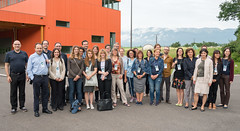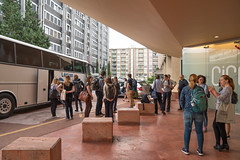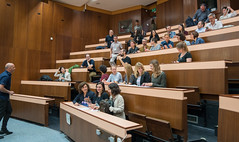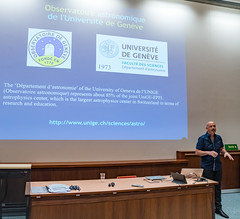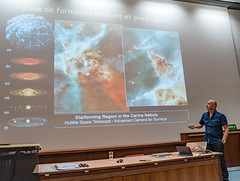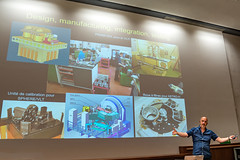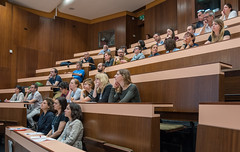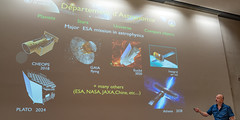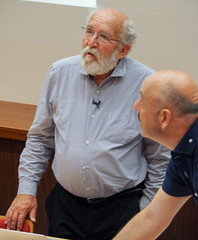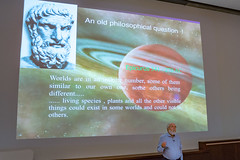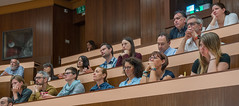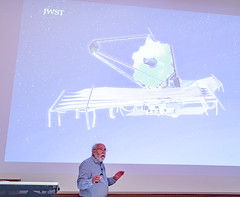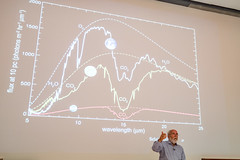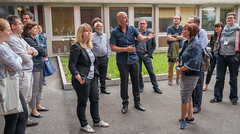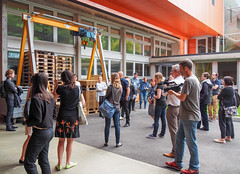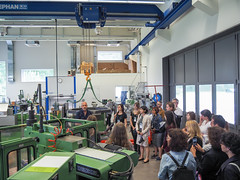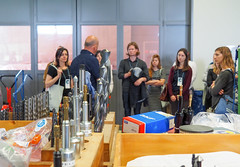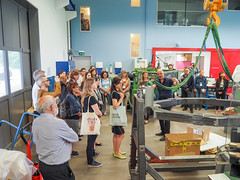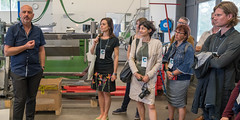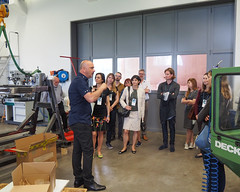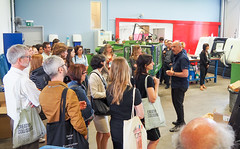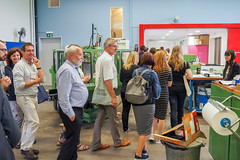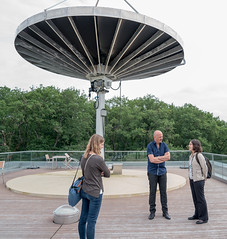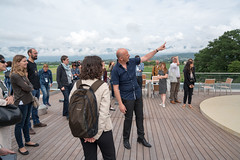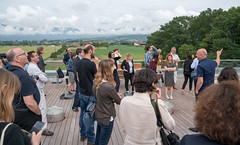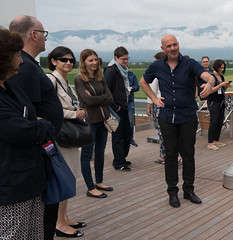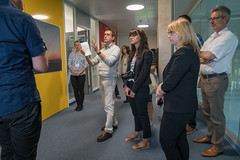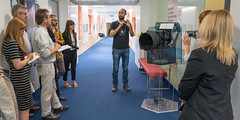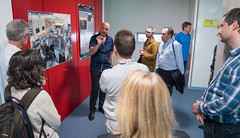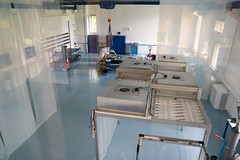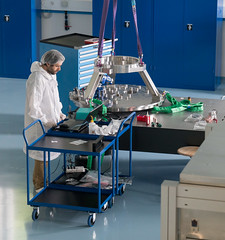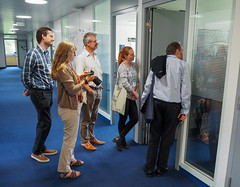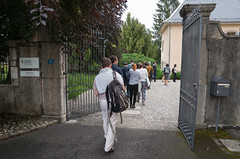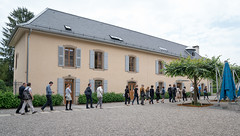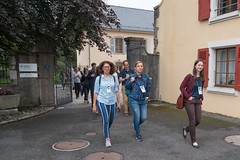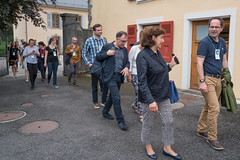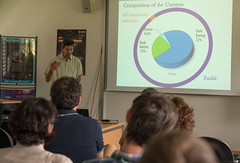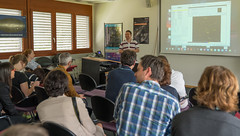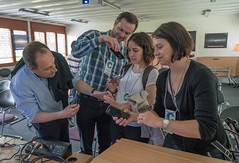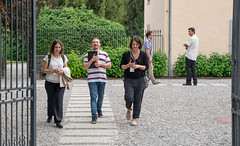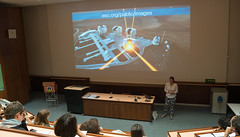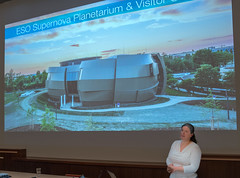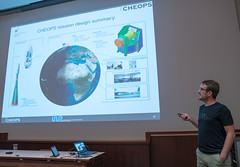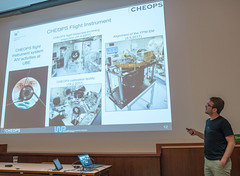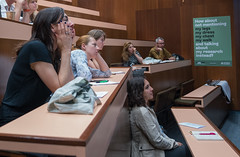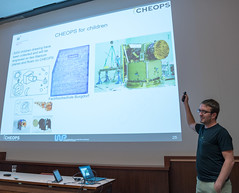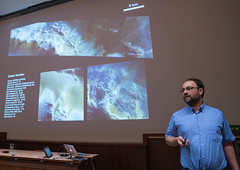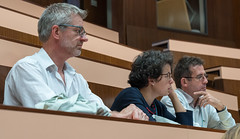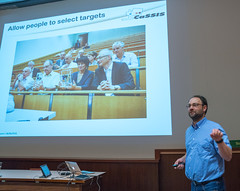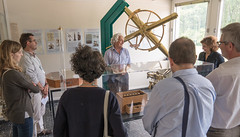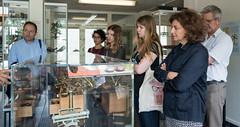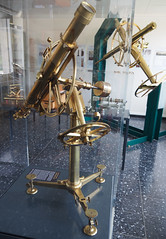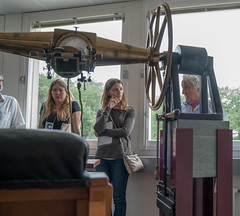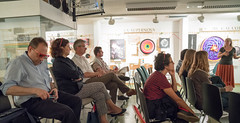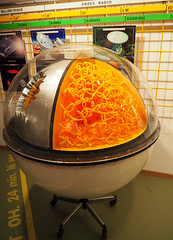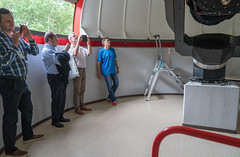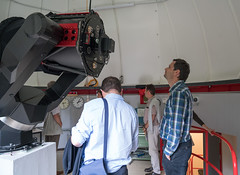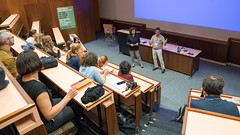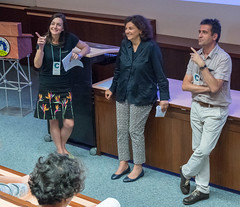The Space Group of Ecsite visits the Geneva Observatory
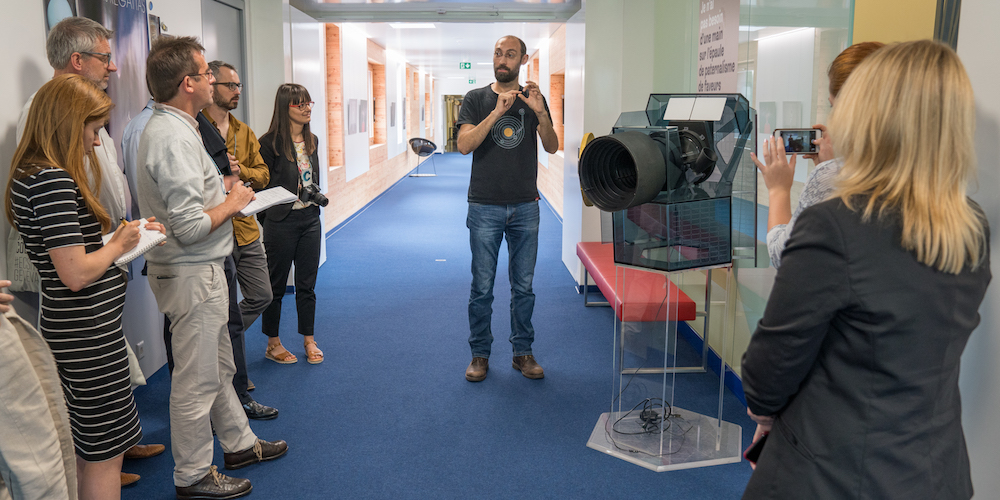
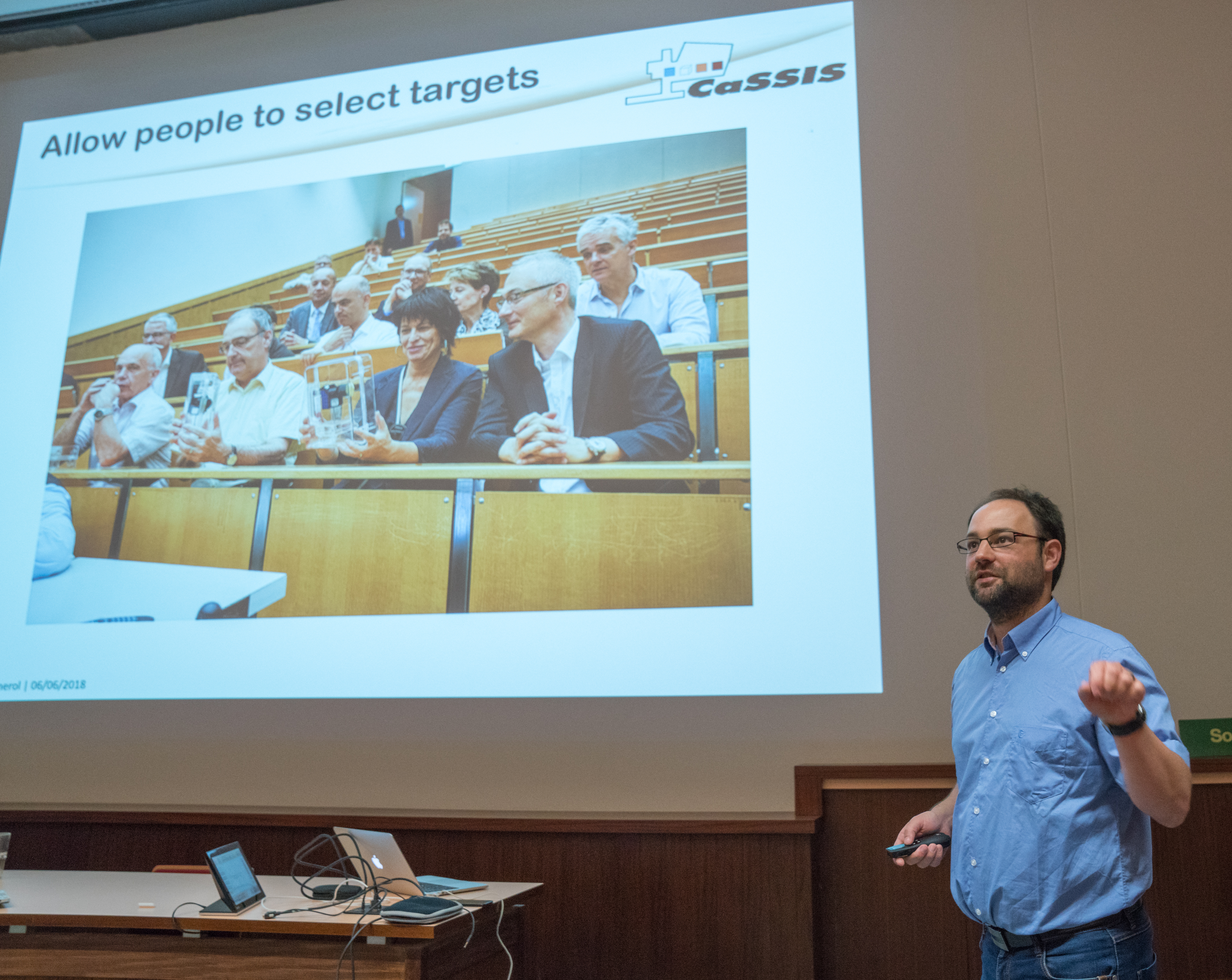
Antoine Pommerol, researcher at the University of Berne, introduces the Bernese camera CaSSIS orbiting Mars on the ESA probe ExoMars. He explains that CaSSIS will take more and more scientific 3D images of the planet’s surface in the coming months. In order to determine which goals are to be photographed, the scientists will even involve the public. This is illustrated by the example of the Swiss Federal Council, which had already selected one of the places CaSSIS would photograph on Mars on the occasion of its annual “school excursion” in 2016. (Photo Sylviane Blum)
Ecsite is an annual international conference that brings together the majority of mediators and other scientific representatives of European museums. This year Ecsite was held in Geneva where no less than 1200 people had made the trip. As is the tradition, the conferences and workshops are preceded by pre-conferences organised by the different Ecsite member groups. This is particularly the case for the Space Group which, encouraged by Guido Schwarz, member of the NCCR and the Space Group, was invited to visit the observatory of the UniGe astronomy department on Wednesday 6 June. The visit was attended by some forty people, including four ESA members and the coordinator of Super Nova, ESO’s new general public site.
After a short bus ride from the Geneva Congress Centre to the Observatory, visitors were welcomed by Francesco Pepe who gave them a presentation of the Institute and its main activities as well as the NCCR PlanetS. Michel Mayor then spoke about the discovery of 51pegb and the future of planetology research.
The visit itself began on the roof of Astrotech, the new building inaugurated last year. Francesco Pepe then asked the traditional question: “What is the purpose of this parabolic dish?” The majority of visitors answer a radio antenna when it is a solar collector to make hot water.
The rest of the visit then focused on CHEOPS and instrumentation. Nicolas Billot, the Operations Manager, took charge of half the group to explain in front of the 1:2 scale model of the satellite what the CHEOPS mission consisted of and what the role of the Observatory was. As for Francesco Pepe, he went to the clean room to describe the place where the ESPRESSO spectrograph, installed on the VLT at the beginning of the year, was integrated and where the first NIRPS parts are starting to be assembled (see interactive photo).
The group then boarded the bus in the direction of Ecogia, the second site of the astronomy department specialized in the study of the extreme universe (black holes, gamma rays, etc.). Stéphane Paltani, professor in the astronomy department, described the main implications of UniGe in ESA space missions with a strong emphasis on Euclid. Euclid is to be launched in 2021 with the aim of determining the origin of dark energy using the gravitational lens and the redshift method. The amount of data that Euclid will transmit is huge, it will amount to about 850 gigabits per day. The processing of this data is particularly delicate and complicated to the point of representing approximately 30% of the mission’s budget.

Participants of Ecsite’s Space Group (European network science centers & museums) visit the Observatoire Astronomique de l’Université de Genève in Versoix, GE. (Photo UniGe)
Following a brief visit to the control room of the Integral satellite launched in 2002 and which continues to contribute its share of discoveries (in particular the link between gravitational waves and gamma radiation emission), visitors were invited for lunch at the observatory. “Today is the launch of a Soyuz rocket with an ESA astronaut on board,” exclaimed one of the agency’s representatives, “what a pity we won’t be able to see the take-off,” she added a little disappointed. The disappointment quickly disappeared, since a giant screen could be installed in the middle of the tables so that everyone could attend the event. ” Wonderful” exclaimed many people, ” in our place it would have been more complicated to organize such a projection so quickly “.
After lunch, visitors were divided into 3 groups to attend three short presentations at various points of the observatory. Michel Grenon described with an impressive amount of details and knowledge the instruments used in the past by the astronomers of the observatory. We learned in particular that the observatory had been founded by the city of Geneva to measure time with maximum precision, because the watchmaking city needed this measure. Sylvia Ekström offered a 3D trip into the solar system and into the Galaxy and Pierre Bratschi opened the dome in which is installed the new 60 cm telescope dedicated to observation for the general public and to students’ practical work.
Then the Space Group representative made a final concluding presentation and all the participants boarded the bus back to Geneva with plenty of stars in their eyes.
